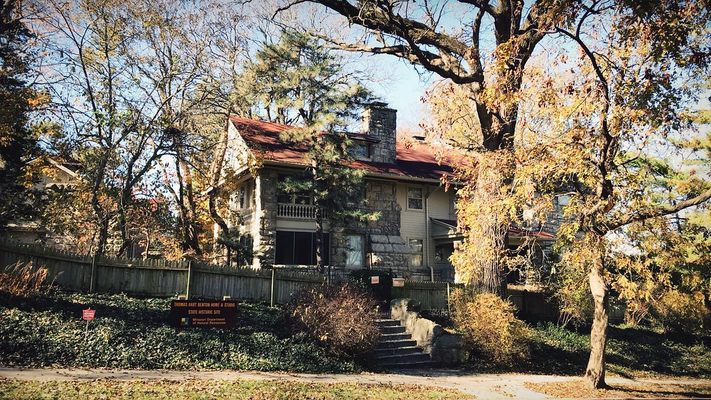About
Thomas Hart Benton was born in the town of Neosho, Missouri, in 1889. He was the oldest of four children and his father, a Colonel and four-time U.S. Congressman, made every effort to steer him toward a similar career in the military and politics.
Benton rebelled, opting instead to study art. His mother supported his artistic pursuits, and with her encouragement, he enrolled in the school of the Art Institute of Chicago. Two years later, Benton moved to Paris to study at the Académie Julian. There, he was influenced by Stanton Macdonald-Wright, whose Synchromist style was a building block in the unique amalgam that characterizes Benton's artistic vision.
Benton moved to New York and continued painting there until enlisting in the Navy during World War I and being stationed in Norfolk, Virginia. Among his duties were camouflaging the ships that entered Norfolk Harbor, and illustrating shipyard work and life. This latter task imbued his works with an aura of realism.
Following the War, he returned to New York and discovered yet another wrinkle in his approach. He began touring the country and making sketches of things he saw in everyday life. As he continued to be drawn to realistic representational interpretations of life across the Midwest and South, he emerged as a leading light in the style known as Regionalism.
In 1932, Benton was commissioned to paint murals of Indiana life for the 1933 Century of Progress exhibition in Chicago. His work stirred up a great deal of controversy as one panel of the murals featured members of the Ku Klux Klan in full regalia. This was not a part of history that many in Indiana wanted to acknowledge, but Benton, a fierce opponent of racism, felt it was an issue that needed to be brought to light and that whitewashing that ignominious part of the state's history was detrimental to making progress as a society. Ninety years later, debate still rages around the paintings, which are currently displayed out of public view in a lecture classroom in Woodburn Hall at Indiana University in Bloomington.
In 1935, Benton left New York and returned to his native Missouri, where he created one of his greatest works, the expansive mural A Social History of Missouri, which again enflamed critics with its portrayals of slavery, the Missouri outlaw Jesse James, and disgraced Missouri political boss T.J. Pendergast. Benton considered this mural to be his best work.
Benton was also a teacher. His most famous student was none other than Jackson Pollock, the founder of Abstract Expressionism. He also briefly taught Dennis Hopper, who became a famous movie actor, while he was studying at the Kansas City Art Institute.
Benton continued to paint into his later years, contributing several public murals while also painting at his home studio. He moved his family into the house in 1939. While working on his final mural, The Sources of Country Music for the Country Music Hall of Fame in Nashville, Tennessee, Benton died in his studio at the age of 85.
The site was established as a museum in 1977, with both the home and studio left undisturbed, offering visitors the chance to experience the intimacy of seeing the place where Mr. Benton lived and died, while doing what he loved.
Related Tags
Know Before You Go
The Thomas Hart Benton Home and Studio State Historic Site was added to the National Register of Historic Places on November 21, 1980.
Community Contributors
Added By
Published
December 4, 2023

























